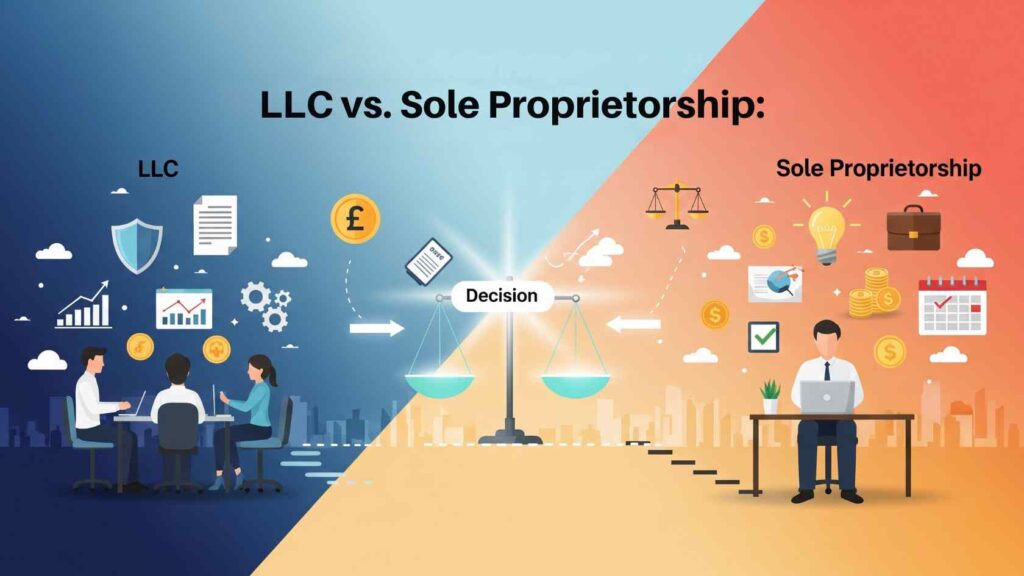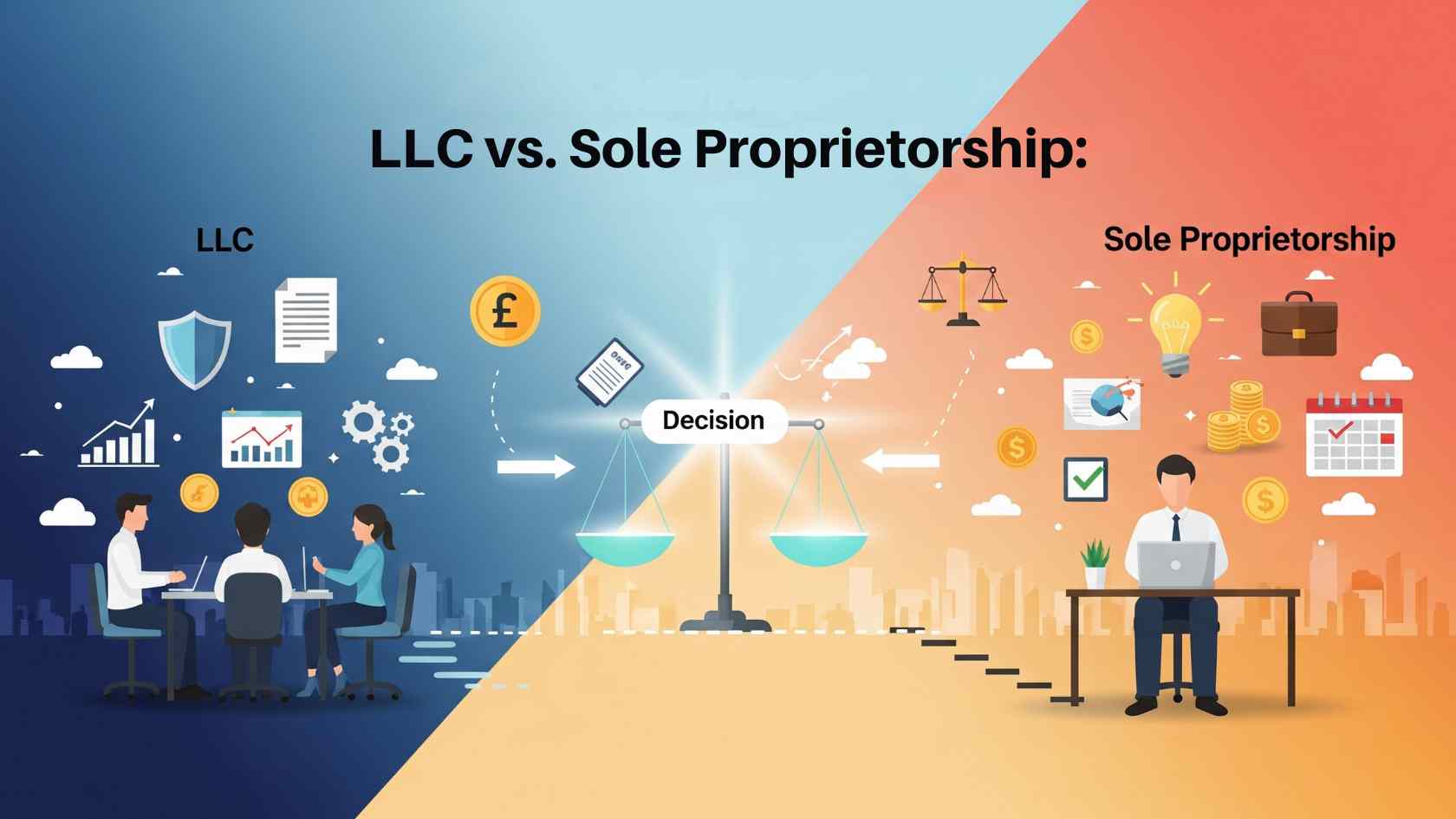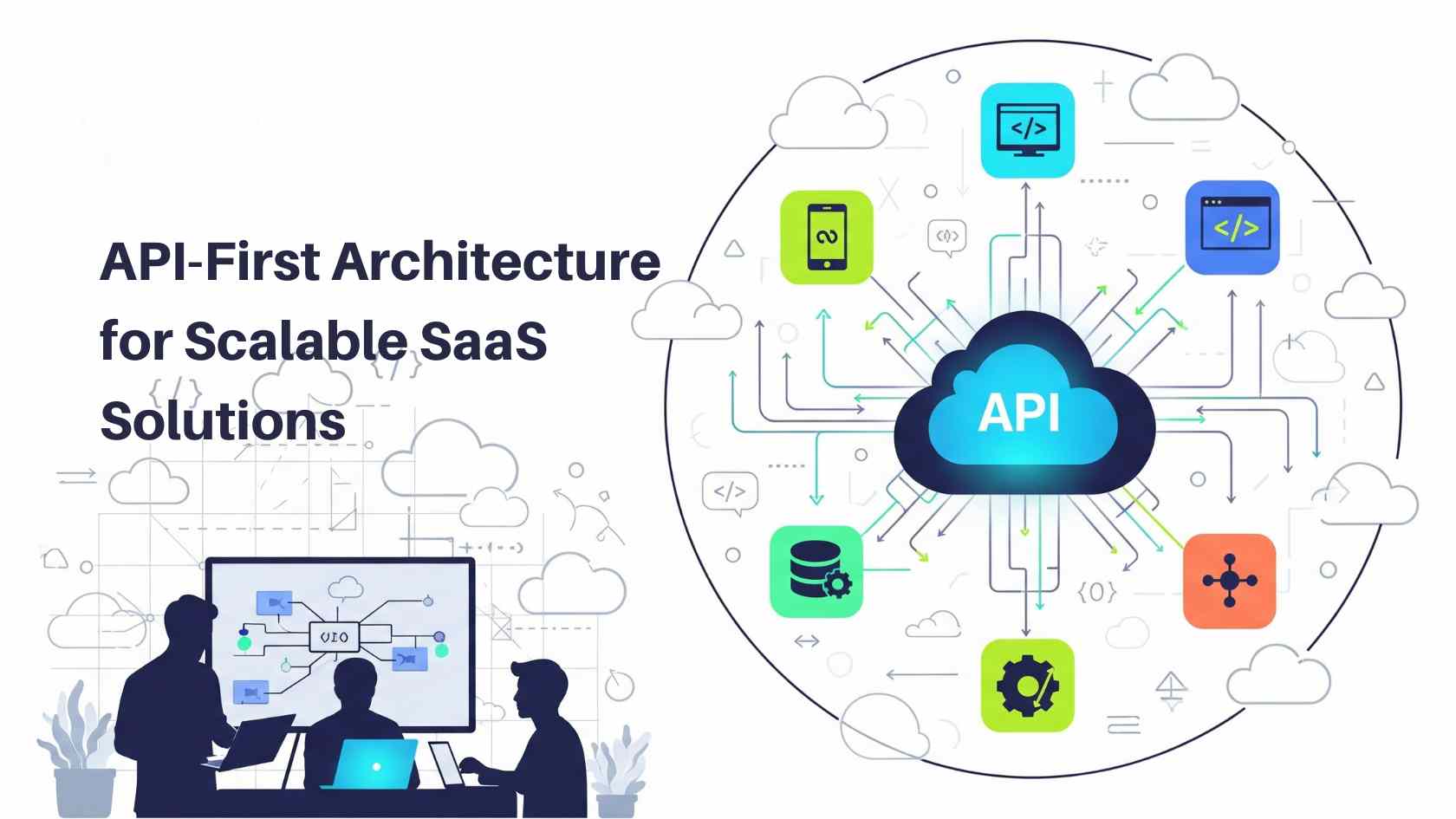Every business starts as an idea that develops rather than a hobby. Once clients start paying and the work begins to accumulate, it’s time to determine how that idea can be turned into a business. Your choice of “business structure” determines your taxes, the level of legal protection you receive, as well as your “professional identity”. The two most common business structures, an LLC (limited liability company) & a sole proprietorship, serve different purposes with different levels of risk. Understanding the differences in these structures is imperative in helping you decide on “what best fits your goal”.
Why Your Business Structure Matters
Your business’s legal entity determines how the world views it. It outlines who is liable in the case of default on debt or taxes on profits, and how much legitimacy it carries with its customers or partners. The incorrect legal structure can close doors, while the correct one can provide the foundation for stability and growth.
A formal legal structure affects the day-to-day workings of your business; any time you open a business account or sign a contract, those decisions relate to the entity structure you’ve chosen. Negligence of formality will translate into operations and how confidently you present yourself in the marketplace.
A Closer Look at the Two Business Types
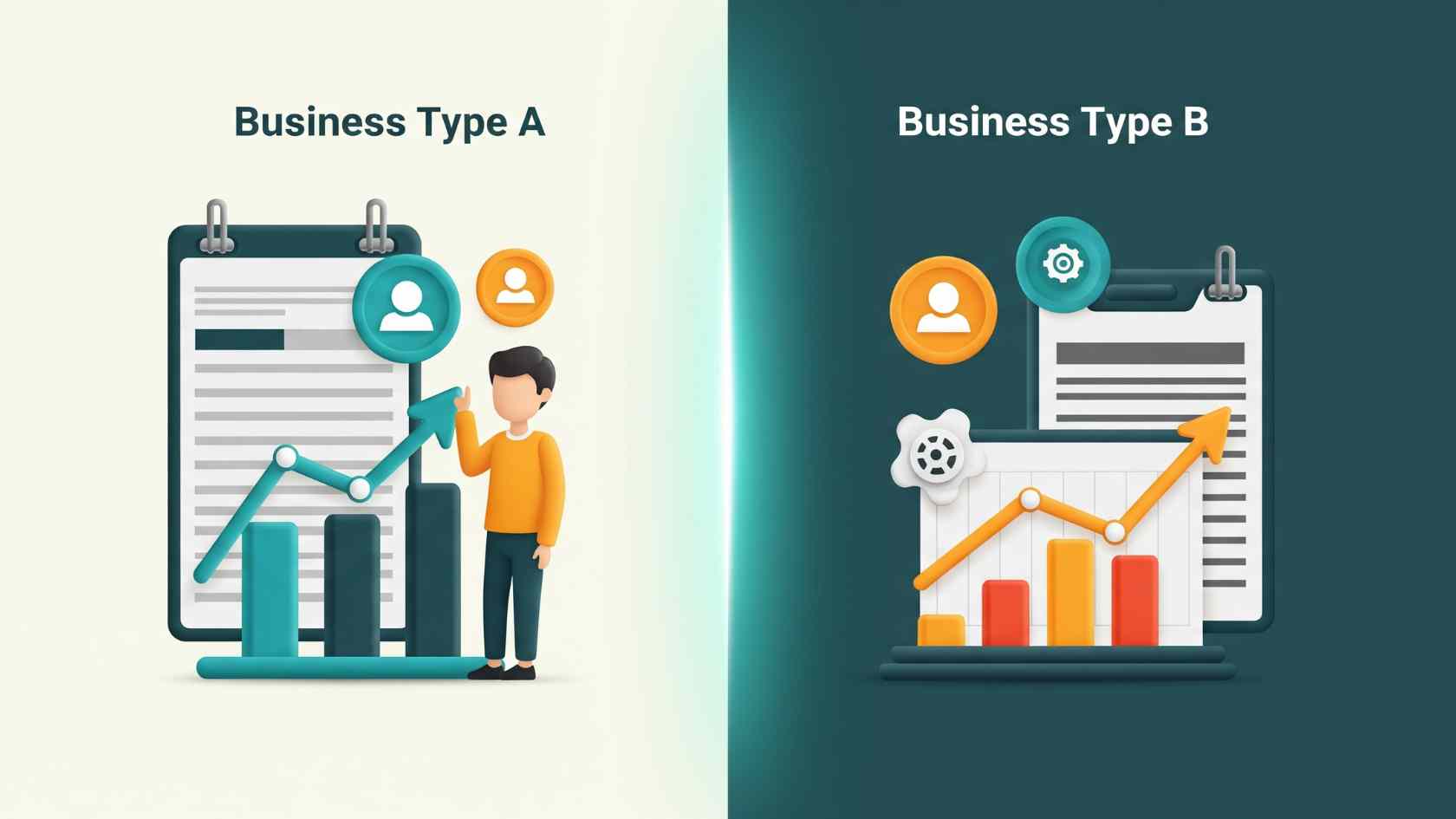
A limited liability company (LLC) & a sole proprietorship let you operate a “small business”, but their rules on ownership, liability, as well as paperwork differ. Here’s a straightforward summary of the basics:
| Aspect | LLC | “Sole Proprietorship” |
| Ownership | One or more members | One person |
| Liability | Personal assets are protected from business liability | The owner is personally responsible for all debts |
| Taxes | Pass-through taxation or option to file as a corporation | Profits taxed as personal income |
| Setup Cost | State filing fees apply | Minimal, usually free to start |
| Paperwork | Requires formation documents and annual reports | Simple and quick |
| Credibility | Viewed as more professional and trustworthy | Informal structure |
Both options can be successful. If you are doing limited work, low-risk work as a sole provider, it could be a good fit. If you want structure and protection to help you grow your business long-term, an LLC provides one option.
Key Benefits of Each Option
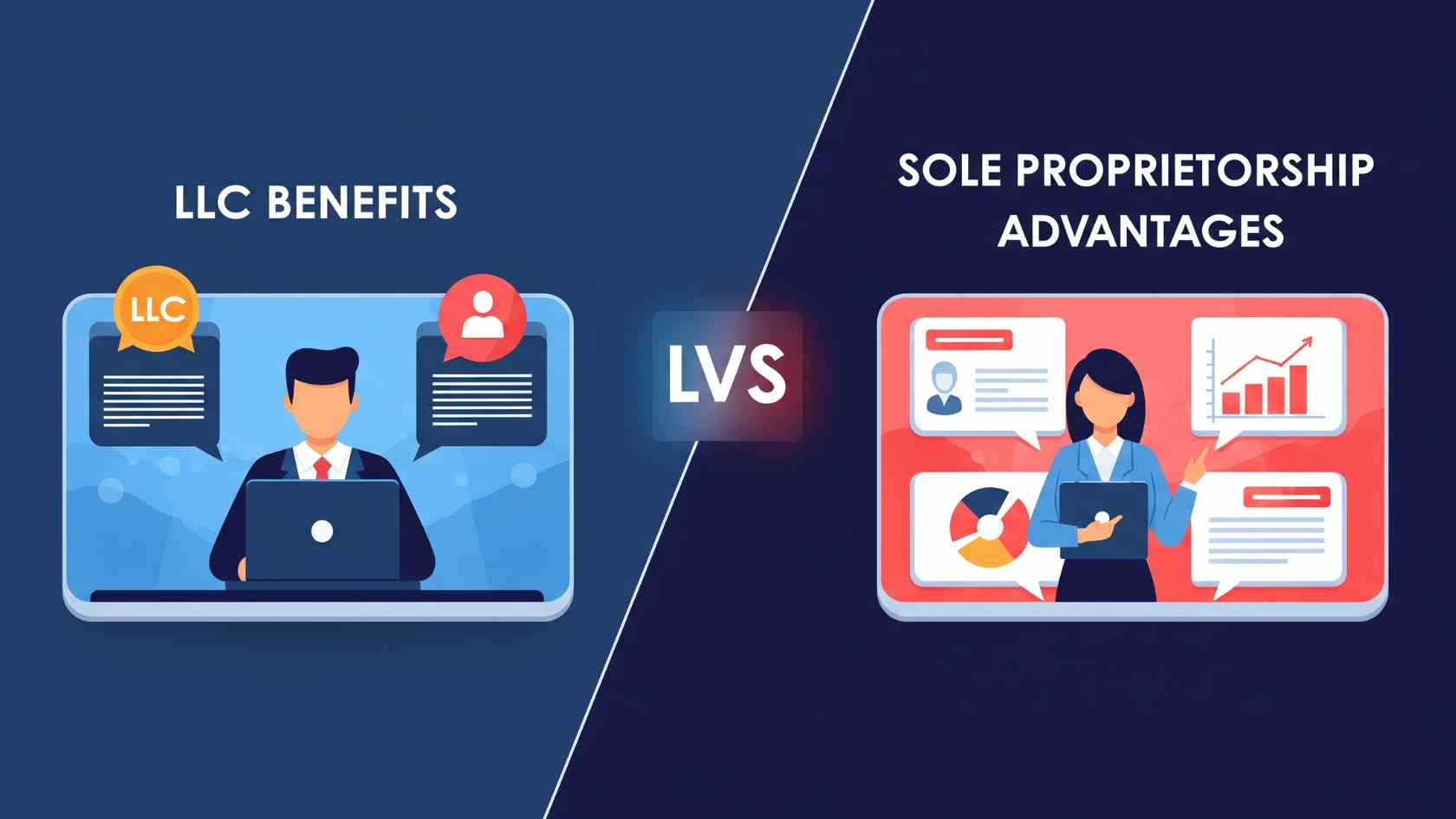
Every “entrepreneur’s” situation is different, so the ideal structure depends on your “vision, budget, & risk tolerance”.
How an LLC Strengthens & Protects Your Business
An LLC protects your personal assets from business debts or lawsuits and creates a clear boundary between personal and professional risk. It also strengthens credibility, as clients and partners view registered companies as reliable and established. The structure allows flexibility in taxation and gives you the option to select the model that fits your income level and goals.
Furthermore, this framework promotes scaling since it makes the hiring process easier and encourages investment attraction and partnerships. Many startup founders use a business starter kit that “unites registration, a domain, email, & website tools” in one package, which helps them set up a “strong & legitimate presence” with minimal effort.
Why Entrepreneurs Choose a Sole Proprietorship
Countless entrepreneurs choose a sole proprietorship because it is the fastest, easiest way to start earning. You can get dragged into doing it by simply operating, with no legal paperwork or approval required, and the fact that you are in total control of every action you take is also an important consideration. The setup is inexpensive, with no fees to file with the state and no ongoing costs, making a sole proprietorship all the more attractive to freelancers, artists, and consultants looking for autonomy.
The main drawback is personal risk. Since there’s no legal separation between you and your business, debts or legal issues can affect your own finances. Even so, many small business owners accept this trade-off for the freedom and simplicity it provides.
Real-World Effects of Going Official

The legal structure you select dictates almost every aspect of managing a business. It matters in terms of how efficiently you assess and deal with your finances, how customers assess your credibility, and how easily you grow your venture. Establishing formality in registration means you can open a business banking account, giving you a spotlight into the world of business, illuminating your records, and helping you maintain sound financial discipline. It also elevates your value to lenders and insurers, as they perceive structures in a much lower risk light.
Professional credibility increases when you run your business with an official name. It indicates to clients you are accountable and committed for the long term. Tax planning gets easier as you make more profit, and the more you separate your personal and business responsibilities, the more confidence you bring to decision-making. You don’t see the real value of the structure in paper; you see it in how secure, trusted, and future-forward your operation becomes.
When to Switch From One to the Other
Many founders begin as sole proprietors and move to an LLC once income or exposure grows. You might reach that point when:
- Your business earns enough to cover filing fees comfortably.
- You sign regular contracts or handle sensitive client data.
- You want to protect personal assets from potential claims.
“Transitioning” does not nullify your work — it builds upon it. “Transitioning” formalizes your growth and adds access to funding, partnerships, as well as branding.
Also Read: How Fishbone Diagrams Help Identify Root Causes And Business Solutions
The Path That Fits Your Dream
The structure of your business should reflect your goals, not someone else’s game plan. A sole proprietorship allows you the freedom and simplicity of owning your business, while an LLC gives you the comfort of security and the potential to grow. Your best option is the one that fits where you see yourself — an independent practitioner v’s a practitioner with a much larger vision. When you make that decision, your idea becomes a brand that is based on mission and potential.

